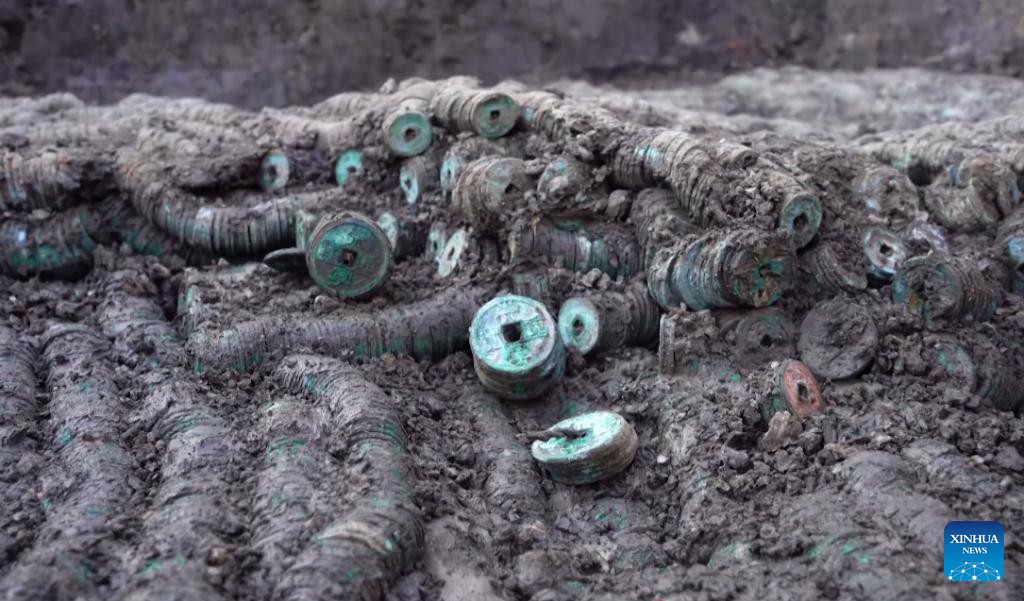An ancient coin hoard containing 1.5 tonnes of coins from the Tang (618-907) and Song (960-1279) dynasties has been discovered in Jiangsu Province, east China. The coins were strong together with straw ropes and arranged in tidy stacks.

The underground remains were unearthed in Shuangdun Village, Jianhu County of Yancheng City. The pit mouth of the hoard was square, 1.63 meters long, 1.58 meters wide, and 0.5 meters deep. Bronze coins connected in series with straw ropes were neatly layered and paved inside. Most were from the Song Dynasty.
The coins that were discovered were well-preserved, and the majority of them had legible inscriptions, indicating a significant value for further study.

Photo: Xinhua
In ancient China, such hoards were often buried in the ground so as to preserve precious porcelain, coins, metal tools, and other valuables, said the researchers.
Seventy wells were also found around the coin hoard, which was near the battle frontline of the Song and Jin troops, making the researchers wonder whether the excavation site belonged to a hutted camp.

Photo: Xinhua
The majority of the coins in the hoard are Song dynasty wens. Bronze wens were the common currency until a severe copper shortage forced the Southern Song dynasty (1127-1279) to issue lower-quality and lower-value coins. Iron was difficult to mint and rusted quickly once in circulation. Due to a lack of bronze coinage, the government was forced to cut military wages in half in 1161, resulting in the invention of paper money. In 1170, the state began to require that half of all taxes be paid with Huizi paper currency stepped into the breach.